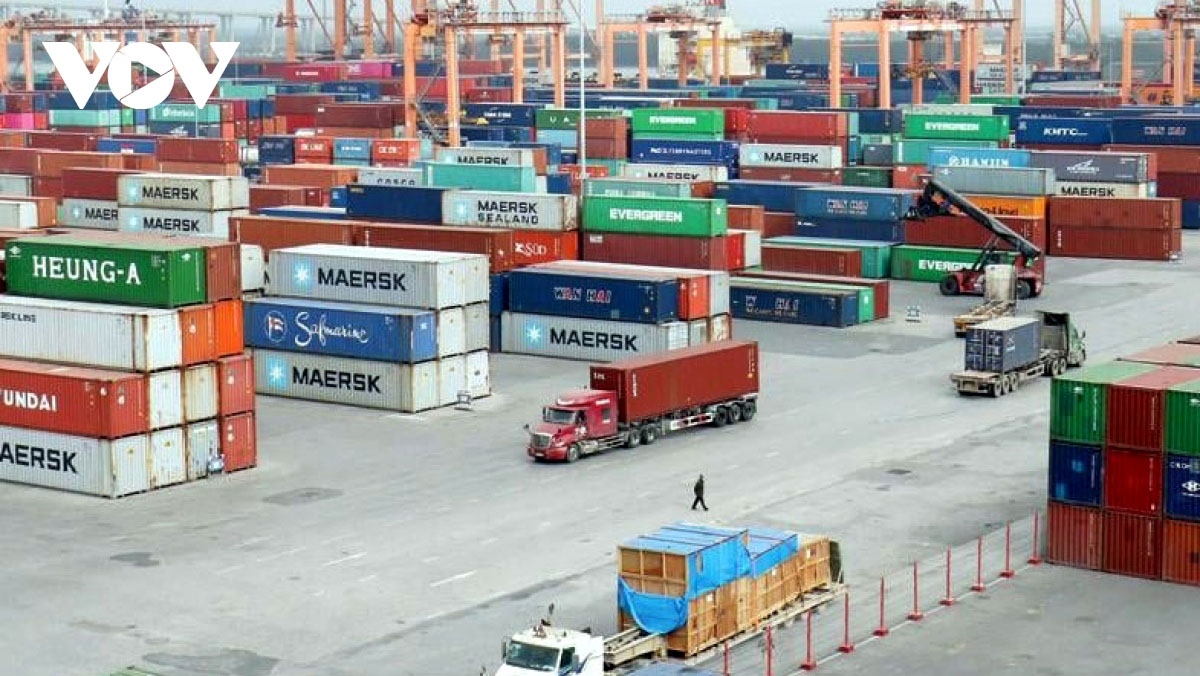Import surplus returns after 23 months, experts downplay concerns
VOV.VN - After enjoying trade surpluses for the past consecutive 23 months, Vietnam once again slipped into an import surplus in May, sparking concerns about the general health of the economy, although experts say it is not really a worrying sign.

According to the General Statistics Office (GSO), the country raked in US$32.81 billion from exports in May, up 15.8% year on year, and spent US$33.81 billion on imports, up 29.9% year on year, resulting in a trade deficit of approximately US$1 billion.
This marked the first time in 23 months that the national economy had fallen into a monthly import surplus, though the five-month period still witnessed the economy gross US$8 billion in trade surplus.
Experts say the trade deficit at this time of year is a good sign, proving that the economy is gathering steam as it continues on its recovery road. They see this as part of businesses moving to increase the import of machinery and raw materials for production to meet consumer and export needs.
Data from the GSO shows that Vietnam spent US$139.89 billion on the import of machinery and raw materials for production over the past five months, accounting for 94% of the total import value.
In a recently released macro report, ACB Securities Ltd. Co. points out that the trade deficit can be considered as a good sign rather than a bad sign. It says the trade deficit seems to be bad news at first glance because it increases exchange rate pressure. However, this can be a positive signal for the economy, taking into account careful analysis of the figures.
The report also indicates that the return to the import surplus is due to the need to import raw materials for production, especially electronics, electrical appliances, and garments-textiles. Increasing import demand may therefore be a step ahead of the export of the products in these key industries.
It is worth remembering that slow import growth hampered the recovery of exports in 2023. Though the trade surplus helped to reduce pressure on exchange rates last year, concerns still loomed large as the economy did not make a breakthrough on its path to recovery.
Indeed, despite pressure on exchange rates in the short term, the trade deficit at this time of year represents a positive signal for the recovery in the production, processing, and manufacturing industries in the coming time.
Meanwhile, economist Le Duy Binh, CEO of Economica Vietnam, a private consulting and research firm specialising in development economics, says it’s too early to fully assess the impact of the May trade deficit on the trade balance of goods for the whole year.
Along with imports, production is continuing to recover, notes the CEO, referring to increases in the Manufacturing Purchasing Managers’ Index™ (PMI) and the Industrial Production Index (IIP) in May. The growth rate of industrial production in some industries is higher, leading to a greater need to import goods and raw materials, while exports heavily rely on imports.
According to the GSO, the Industrial Production Index (IIP) in May rose by 8.9% over the same period from last year. Many industries in support of exports secured high growth compared to the same period last year, such as the production of products from rubber and plastics rising by 24.1%; of wood and bamboo by 23.0%; of electrical appliances by 19.4%; of beds, wardrobes, tables and chairs by 18.8%; of electronic products, computers and optical products by 17.4%; and garments by 9.4%.
The return to the trade deficit can be seen as a concern, but it can also be expected that the sharp increase in the trade deficit due to imports of equipment, machinery, and raw materials for production is an indicator that industrial production will recover more positively in the near future, comments the GSO.
Economic experts say that import demand will increase in the context of economic recovery this year, bringing to bear pressure on exchange rates, fueling businesses’ need to buy foreign currency. However, the import of raw materials to support economic recovery will create a premise to promote production and export activities, thereby creating foreign exchange revenue in the future. This cycle is believed to have the ability to relieve exchange rate pressure in the near future.


